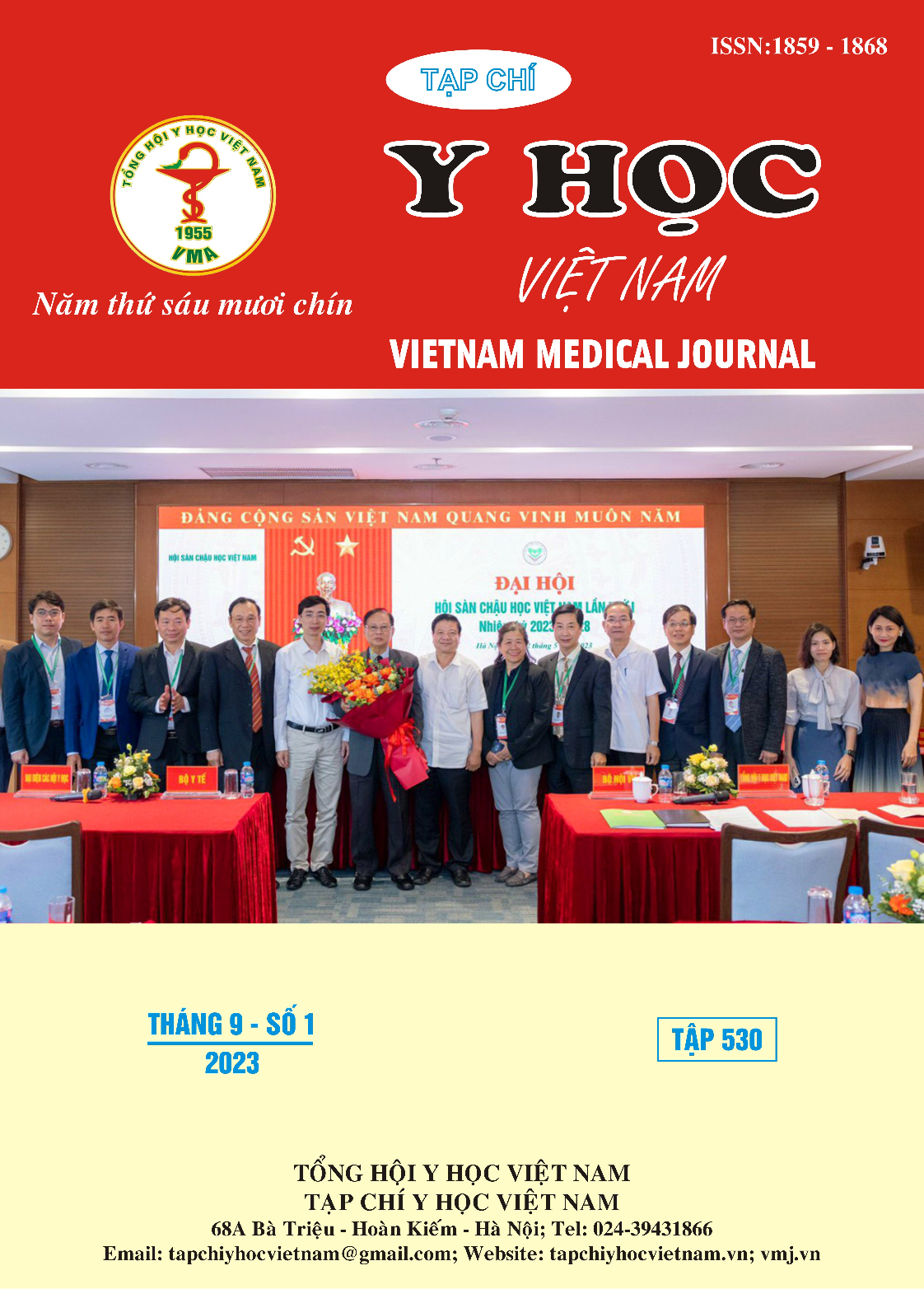CÁC YẾU TỐ TIÊN ĐOÁN TỬ VONG TRONG VÒNG 1 NĂM SAU CẤY VAN ĐỘNG MẠCH CHỦ QUA ỐNG THÔNG TRÊN BỆNH NHÂN NGƯỜI CAO TUỔI VIỆT NAM HẸP VAN ĐỘNG MẠCH CHỦ NẶNG: KINH NGHIỆM TẠI MỘT TRUNG TÂM
Nội dung chính của bài viết
Tóm tắt
Mục tiêu: Nghiên cứu này nhằm xác định các yếu tiên lượng tử vong trong vòng 1 năm trên bệnh nhân người cao tuổi tại Việt Nam bị hẹp van động chủ (ĐMC) nặng có triệu chứng được cấy van động mạch chủ qua ống thông (TAVI). Đối tượng và phương pháp nghiên cứu: Từ tháng 3 năm 2017 đến tháng 12 năm 2022 có 71 bệnh nhân (³ 60 tuổi) bị hẹp van ĐMC nặng có triệu chứng được TAVI tại Bệnh viện Vinmec Central Park và có thời gian theo dõi ít nhất 1 năm. Các đặc điểm bệnh nhân được phân tích theo 2 nhóm (tử vong-TV và còn sống-CS) tại thời điểm 1 năm với các tiêu chí theo VARC-2. Kết quả: Có 4 bệnh nhân (5,6%) TV trong vòng 1 năm sau TAVI. Nhóm TV có tỷ lệ cao hơn về suy tim mạn, bệnh mạch máu não, điểm nguy cơ phẫu thuật (STS), van động chủ 2 mảnh, chênh áp trung bình và tối đa qua van ĐMC. Ngược lại, nhóm bệnh nhân CS có chức năng tâm thu thất trái và tỷ lệ thành công cấy van cao hơn. Phân tích hồi qui đơn biến cho thấy có 5 yếu tố làm tăng TV tại thời điểm 1 năm sau TAVI bao gồm suy tim mạn, bệnh mạch máu não, điểm nguy cơ phẫu thuật STS, chênh áp trung bình qua van ĐMC và thất bại khi cấy van. Kết luận: Nghiên cứu trên 71 bệnh nhân người cao tuổi Việt Nam được TAVI tại 1 trung tâm cho thấy các yếu tố tiên đoán TV trong vòng 1 năm sau thủ thuật bao gồm suy tim mạn, bệnh mạch máu não, điểm nguy cơ phẫu thuật (STS), chênh áp trung bình qua van ĐMC và thất bại cấy van.
Chi tiết bài viết
Từ khóa
Tử vong một năm, thay van động mạch chủ qua ống thông, Việt Nam
Tài liệu tham khảo
2. Malik, A.H.; Zaid, S.; et al. A meta-analysis of 1-year outcomes of transcatheter versus surgical aortic valve replacement in low-risk patients with severe aortic stenosis. J Geriatr Cardiol 2020, 17, 43-50.
3. Maeda, K.; Kumamaru, H.; et al. A Risk Model for 1-Year Mortality After Transcatheter Aortic Valve Replacement From the J-TVT Registry. JACC Asia 2022, 2, 635-644.
4. Kappetein, A.P.; Head, S.J, et al. Updated standardized endpoint definitions for transcatheter aortic valve implantation: the Valve Academic Research Consortium-2 consensus document (VARC-2). Eur J Cardiothorac Surg 2012, 42, S45-60.
5. Greason, K.L.; Eleid, M.F.; et al. Predictors of 1-year mortality after transcatheter aortic valve replacement. J Card Surg 2018, 33, 243-249.
6. Kjønås, D.; Schirmer, H.; et al. Clinical and Echocardiographic Parameters Predicting 1- and 2-Year Mortality After Transcatheter Aortic Valve Implantation. Front Cardiovasc Med 2021, 8, 739710.
7. Yoon, S.H.; Ahn, J.M; et al. Clinical Outcomes Following Transcatheter Aortic Valve Replacement in Asian Population. JACC Cardiovasc Interv 2016, 9, 926-933.
8. Li, Y.M.; Xiong, T.Y.; Xu, K.; et al. Characteristics and outcomes following transcatheter aortic valve replacement in China: a report from China aortic valve transcatheter replacement registry (CARRY). Chin Med J (Engl) 2021, 134, 2678-2684.


